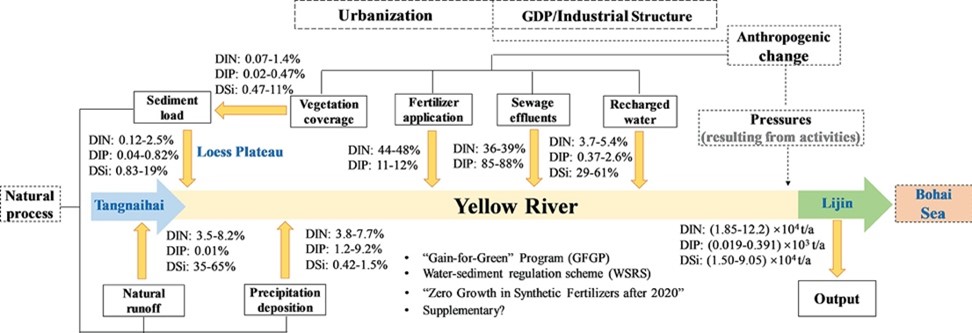From 2001 to 2018, the dissolved inorganic nitrogen (DIN), dissolved inorganic phosphorus (DIP) and dissolved silicon (DSi) concentrations showed decreasing trends in the Yellow River. These trends may have been influenced by the continuous promotion of protection polices and an increase in public environmental awareness. Extremely low nutrient concentration events were observed since 2014 in response to the retention effect of dam construction, which significantly reduced the downstream water discharge and sediment load and increased phytoplankton uptake. Moreover, the nutrient loading to the Yellow River derived from environmental and societal impacts were quantified. The dominant controlling factors of the total nutrient influxes to the Yellow River for DIN, DIP, and DSi were fertilizer loss, sewage effluents, and runoff, respectively. Based on the main sources of nutrients, this work suggests to strictly control the amount of fertilizer and improve the application methods, improve sewage treatment technology, and vigorously promote “green travel”. It is possible to own a better water quality in the Yellow River with formulate strategies.
This study was presented firstly at IMBeR Future Oceans2, and contributes as an Chinese case study to the IMBeR-FEC CMWG. The first author Nian Wu is an IMECaN member from Ocean University of China and Qingdao National Laboratory for Marine Science and Technology. The study can be found online here.
Figure (above): Relative contributions of various factors toward the total DIN, DIP, and DSi fluxes to the Yellow River.
About the author

The first author, Nian Wu, is an IMECaN member from Ocean University of China and Qingdao National Laboratory for Marine Science and Technology.
